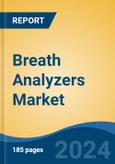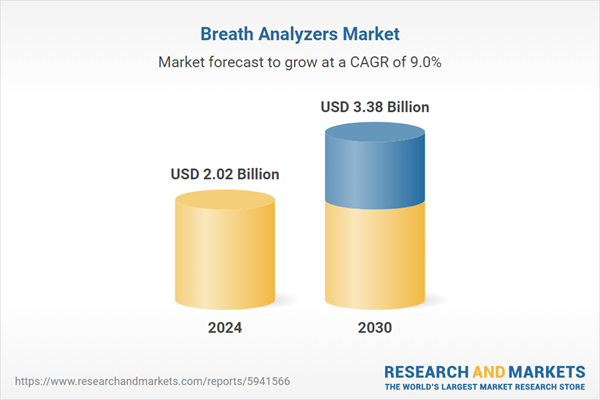Fuel Cell Technology is the fastest growing segment, North America is the largest market globally
Speak directly to the analyst to clarify any post sales queries you may have.
10% Free customizationThis report comes with 10% free customization, enabling you to add data that meets your specific business needs.
Key Market Drivers
The global breath analyzers market experiences substantial impetus from stringent government regulations and intensified law enforcement against impaired driving. Governments worldwide are increasing efforts to curb incidents involving alcohol and drug-impaired drivers through enhanced policies and expanded roadside testing protocols. These regulatory frameworks necessitate the widespread adoption of breath analysis devices across law enforcement agencies, directly translating into consistent market demand.Key Market Challenges
A significant factor impeding the expansion of the global breath analyzers market involves the intricate challenge of ensuring consistent device accuracy and reliability across varied environmental conditions and diverse user physiological states. This directly influences both the operational effectiveness of these devices and their widespread regulatory acceptance. Inconsistent performance can lead to a erosion of trust among critical end-users, including law enforcement agencies and healthcare providers, thus hindering broader adoption. Furthermore, the complexities of validating device performance under all potential real-world scenarios contribute to prolonged regulatory approval processes, delaying market entry for new technologies and models.Key Market Trends
The miniaturization of breath analyzer devices is a significant market trend, enhancing user convenience and expanding applicability across various sectors. Smaller, more portable devices cater to increasing demand for discrete personal use and efficient professional deployment. This allows for easier integration into daily routines and streamlined field operations for law enforcement and healthcare providers. According to the National Safety Council's "Work to Zero 2024" report, in 2023, 83% of surveyed employees expressed willingness to try and use new safety technologies in the workplace, reflecting an openness to more accessible tools.Key Market Players Profiled:
- Lifeloc Technologies, Inc.
- Quest Products, LLC
- Intoximeters, Inc.
- Alcohol Countermeasure Systems Corp.
- AK GlobalTech Corp.
- Bedfont Scientific Ltd.
- Tanita Corporation
- Lion Laboratories Ltd
- Shenzhen Ztsense Hi-Tech Co., Ltd
- Drägerwerk AG & Co. KGaA
Report Scope:
In this report, the Global Breath Analyzers Market has been segmented into the following categories:By Technology:
- Fuel Cell Technology
- Semiconductor Sensor
- Infrared (IR) Spectroscopy
- Others
By Application:
- Drug Abuse Detection
- Alcohol Detection
- Medical Applications
- Others
By Region:
- North America
- Europe
- Asia Pacific
- South America
- Middle East & Africa
Competitive Landscape
Company Profiles: Detailed analysis of the major companies present in the Global Breath Analyzers Market.Available Customizations:
With the given market data, the publisher offers customizations according to a company's specific needs. The following customization options are available for the report:- Detailed analysis and profiling of additional market players (up to five).
This product will be delivered within 1-3 business days.
Table of Contents
Companies Mentioned
- Lifeloc Technologies, Inc.
- Quest Products, LLC
- Intoximeters, Inc.
- Alcohol Countermeasure Systems Corp.
- AK GlobalTech Corp.
- Bedfont Scientific Ltd.
- Tanita Corporation
- Lion Laboratories Ltd
- Shenzhen Ztsense Hi-Tech Co., Ltd
- Drägerwerk AG & Co. KGaA
Table Information
| Report Attribute | Details |
|---|---|
| No. of Pages | 185 |
| Published | November 2025 |
| Forecast Period | 2024 - 2030 |
| Estimated Market Value ( USD | $ 2.02 Billion |
| Forecasted Market Value ( USD | $ 3.38 Billion |
| Compound Annual Growth Rate | 8.9% |
| Regions Covered | Global |
| No. of Companies Mentioned | 10 |









